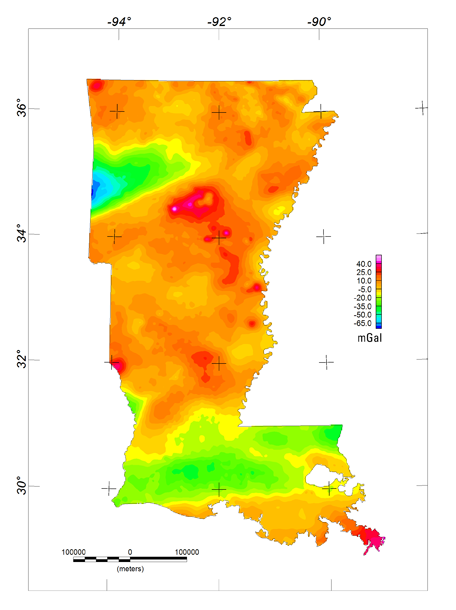 |
The colors on this isostatic residual gravity map reflect variations in the Earth’s gravity field caused by density variations in the rocks composing the upper part of the Earth’s crust. An isostatic residual gravity grid was derived from the Bouguer gravity anomaly data by removing the gravitational effect of the compensating mass that supports topographic loads. The thickness of this compensating mass was calculated using averaged digital topography by assuming a crustal thickness for sea level topography of 30 km (18 mi), a crustal density of 2.67 g/cc, and a density contrast between the crust and upper mantle of 0.40 g/cc. The anomalies and patterns on the map reveal features of subsurface geology such as the location of buried faults, sedimentary basins, plutons, or uplifted basement rocks. Positive anomalies (red colors) delineate rocks more dense than the Bouguer reduction density of 2.67 g/cc, whereas negative anomalies (blue colors) result from rocks of lower density. The color scale used to create this image is non-linear to best represent the range of values.
Grids for this map in various formats are listed in the data directory using the prefix “arkla_isograv.” Grids and data files contain data beyond the State boundaries.
|